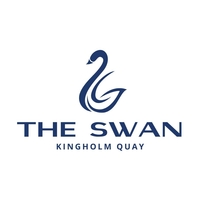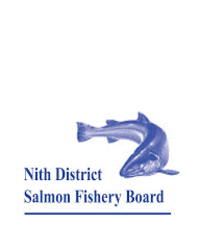Many thanks to The Swan at Kingholm Quay for facilitating this camera's location and to
The Scottish Environment Protection Agency for capitally funding its installation. Kingholm Quay, originally a part of the port of Dumfries, was constructed in 1747. A notable event occurred in August 2005 when the 80ft beam trawler named Petronella arrived at Kingholm Quay, marking the largest vessel to navigate the River Nith in over fifty years. The Nith Navigation website provides the following excerpt: "The port of Dumfries once held significant importance, encompassing Dumfries, Kingholm Quay, Kelton, Glencaple, and Carsethorn. While the trade primarily consisted of local coastal shipping, imports consistently surpassed exports. During the early 18th century, customs records indicate a substantial increase in shipping, with the town already establishing connections with the colonies in North America. In the 1740s, Dumfries earned the nickname 'Scottish Liverpool' due to its significant involvement in the tobacco trade. Coal from Cumberland constituted the largest proportion of trade, which endured into the 20th century. Lime was another common import, while brandy, wine, dried fruits, and luxury textiles were sourced from France and Spain. Alongside tobacco, these commodities fueled the activities of smugglers, and contemporary customs accounts highlight the daunting task of controlling such illicit trade. In the early 18th century, buoys were installed in the lower reaches of the Nith, and in 1710, blasting occurred at Castledykes to improve the channel. However, there was no harbor in the Nith. In 1746, the Earl of Nithsdale offered land at Glencaple for an outport, receiving stone from his quarries at Bankend in return for the free passage of his goods over the toll bridge in Dumfries. In 1747, the construction of Kingholm Quay commenced. The town commissioned Milligan, the mason of Borron village, to build a lighthouse at Satterness (Southerness) in 1748, appearing as a 'lighthouse' on General Roy's 1753 map. Although unlit in the 1790s, a beacon was present on the point. By the early 1800s, the town procured oil and employed a lighthouse keeper. Trade flourished, and Dumfries served as a departure point for destinations including Whitehaven, Workington, London, Liverpool, Caernarvon, Thurso, Leith, Dublin, Belfast, Cork, Virginia, New England, Rotterdam, Trondheim, Gothenburg, Malaga, Oporto, Danzig, Cadiz, Dieppe, Bordeaux, and many others. Exports encompassed grain, potatoes, and livestock. However, by 1810, navigation on the Nith had become perilous and virtually impassable for vessels exceeding 60 tons. In response, the town initiated action, commissioning James Hollingsworth, a civil engineer, to conduct a survey of the river and devise a plan for its improvement. Subsequently, an Act of Parliament was passed in 1811, appointing commissioners with the authority to borrow £16,000 for the implementation of the proposed enhancements. The objective was to enhance navigation to accommodate vessels with a minimum draft of six feet. The early 1800s witnessed a substantial wave of emigration from Dumfries to the colonies, particularly Canada, as evidenced by newspaper advertisements featuring regular departures from Glencaple and Carsethorn. The coastal trade of the port of Dumfries reached its zenith in the 1840s, with nearly 25,000 tons of cargo entering the river, and steamboats like the 'Countess of Nithsdale' frequently plying the route to Liverpool. However, a decline set in around 1850 with the advent of the railway, and the cost of channel improvements became disproportionate to the shipping activity. Furthermore, the increasing size of ships rendered Dumfries economically unviable." Presently, Kingholm Quay in Dumfries offers various wintering options for pleasure craft of all sizes, as well as small commercial vessels. The river has recently undergone dredging to enhance access to the quay. Additionally, a Farson streaming webcam is strategically positioned to help monitor water levels,
high tides and the potential flooding.







